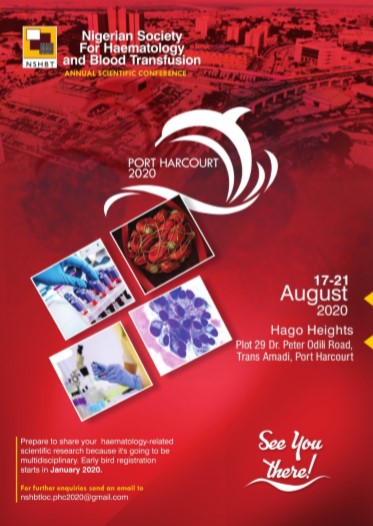Clinical Phenotypes in a Cohort of Nigerian Patients with Sickle Cell Anaemia: Relationship to Serum Lactate Dehydrogenase
Keywords:
Venn diagram model, painful events, serum LDH, chronic hyperhaemolysis, Nigeria, sickle cell anaemia, PhenotypesAbstract
Background: Distinct phenotypes based on serum lactate dehydrogenase (LDH) levels have been described in sickle cell anaemia (SCA) in studies mainly conducted in high-income countries. We aimed to characterise the phenotypes of Nigerian patients with SCA based on serum LDH distribution and pain episodes.
Materials and Methods: This was a descriptive cross-sectional study of 200 male and female patients with SCA, aged 2-43 years, who were in the steady-state. Medical history was obtained through structured questionnaire and review of clinical notes. Haematological and biochemical investigations included full blood count, reticulocyte count, Hb F quantification, serum LDH and total and direct bilirubin. Data were analysed using Stata v15. Patients were categorised into phenotypes based on quartile distribution of LDH and annual pain rates. Subgroup analyses were conducted within the upper and lower quartile groups to elucidate their subtle characteristics.
Results: There was moderate, but significant correlation between serum LDH and other haemolytic markers. The mean haematocrit, Hb F level, total white blood cell, platelet and reticulocyte counts were statistically different between the upper and lower LDH quartiles (p<0.05), while the annual pain rates were not different (p=0.1117). Within the upper quartile of LDH distribution (i.e. hyperhaemolysis group, n=52), 11(5.5%) had concomitant high pain rate (painful events ≥ 3/annum) suggestive of a mixed haemolytic/ vasoocclusive phenotype. Similarly, within the lower quartile (viscosity/vasooclussive group, n=50), 47(23.5%) had associated low pain rate (painful events < 3/annum) suggestive of a clinically silent phenotype. Patients with LDH levels in the interquartile range had pain rate ranging from high to low, suggesting a variable phenotype.
Conclusions: Clinical phenotypes of patients with SCA in Northern Nigeria are potentially more complex than those described outside the African setting. A 'Venn diagram' model is proposed to depict these phenotypes.
Downloads
Downloads
Published
Issue
Section
License
Copyright (c) 2023 Nigerian Journal of Haematology

This work is licensed under a Creative Commons Attribution-NonCommercial-NoDerivatives 4.0 International License.








